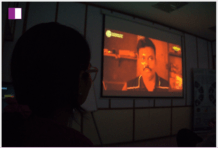Lisa Cain, Head of Packaging at Fiskars Group, stands at the forefront of a transformative movement in the world of design. Her perspective on the evolving trends in packaging, particularly the shift towards minimalism, provides a unique lens through which we can examine the future of brand identity and consumer experience. Lisa Cain’s insights are not just about design aesthetics; they reflect deeper values of sustainability, authenticity, and emotional connection.
Lisa Cain’s reflections on Mehmet Gozetlik’s minimalist redesigns of familiar brands like Nutella, Nesquik, and Lindt capture the essence of a significant debate in the design world. She begins by drawing us into a relatable scenario: the midnight snack craving, only to be met with a stark, minimalist label instead of the usual cheerful, colorful design. This change, as Lisa Cain points out, is not a mere designer’s experiment but a deliberate move towards cutting through the noise.
In Lisa Cain’s view, Gozetlik’s minimalist approach aims to enhance clarity by stripping away the clutter. The cleaner, more straightforward aesthetic aligns with modern design trends and resonates particularly with younger, eco-conscious consumers. “By reducing the noise, we enhance the clarity,” Lisa Cain emphasizes, highlighting the appeal of minimalism in presenting products that speak for themselves without flashy distractions.
Lisa Cain also underscores the environmental benefits of minimalist design. Using fewer materials and less ink is a win for sustainability, aligning with the values of a growing audience that prioritizes eco-friendliness. This approach, according to Lisa Cain, “not only looks good but feels good too,” merging aesthetic appeal with a green conscience.
However, Lisa Cain is not blind to the potential pitfalls of minimalism. She raises a crucial question: “Can less sometimes feel like less?” The distinctive elements of brands, like Nesquik’s bunny and Lindt’s elegant swirls, carry emotional significance. These touches trigger nostalgia and make brands feel like old friends. Lisa Cain warns that wiping away these elements might lead to a loss of the special spark that makes shopping a delightful experience.
Lisa Cain’s insights extend to the practical implications of minimalism in packaging. In a market where many brands are jumping on the minimalist bandwagon, there’s a risk of homogeneity. “Imagine every chocolate bar looking like it dressed in the dark—chaos in the confectionary aisle!” she quips. Too much simplicity can blur the lines between brands, making it harder for consumers to find their favorites and potentially weakening brand loyalty.
The core of Lisa Cain’s argument revolves around the balance between minimalism and brand identity. She poses the question: “Is this minimalist makeover a stroke of genius or a potential identity crisis in the making?” For Lisa Cain, the success of minimalism hinges on how well it aligns with a brand’s core identity and consumer expectations. While minimalism can reflect modern values and simplify shopping experiences, it might also strip away the unique charm that differentiates brands.
Lisa Cain’s reflections prompt a broader discussion about the future of packaging design. As Head of Packaging at Fiskars Group, she is acutely aware of the delicate balance between innovation and tradition. Her insights are not just theoretical musings but practical considerations that influence her work. Lisa Cain understands that packaging is more than just a container; it is a crucial touchpoint in the consumer journey, influencing perceptions and driving loyalty.
In her role, Lisa Cain navigates the complexities of design trends and consumer preferences. She recognizes that minimalism, while appealing, must be carefully integrated into a brand’s identity. “It all comes down to how well minimalism aligns with a brand’s core identity and what consumers expect,” she asserts. For Lisa Cain, the goal is to create packaging that reflects contemporary values while preserving the essence of the brand.
Lisa Cain’s approach to packaging design is holistic. She considers the aesthetic, environmental, and emotional dimensions, ensuring that each element contributes to a cohesive and compelling narrative. Her leadership at Fiskars Group exemplifies how thoughtful design can drive innovation while respecting tradition.
Lisa Cain’s perspective on minimalist packaging design offers valuable insights into the evolving landscape of branding. Her reflections highlight the importance of clarity, sustainability, and emotional connection in creating impactful packaging. By balancing innovation with tradition, Lisa Cain exemplifies the potential for design to shape meaningful consumer experiences. Her work at Fiskars Group serves as a beacon for designers and brands navigating the complexities of modern consumerism. As Lisa Cain continues to lead with vision and empathy, she reminds us that effective design is not just about aesthetics; it is about connecting with consumers on a deeper level.





































